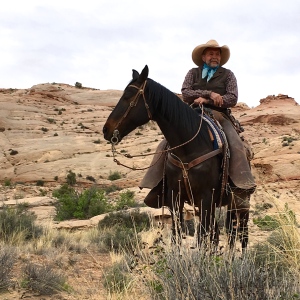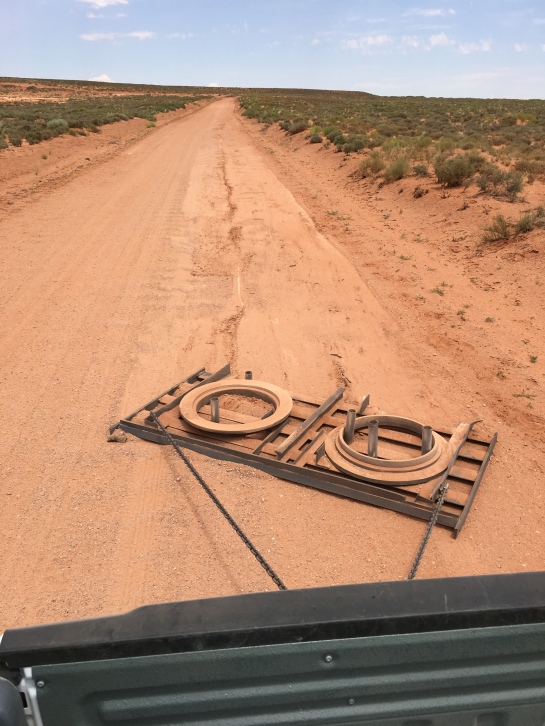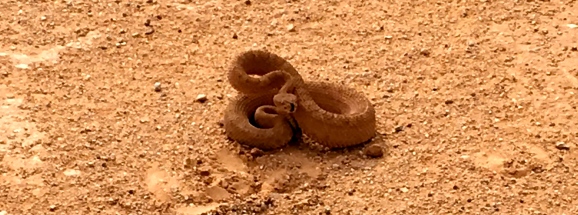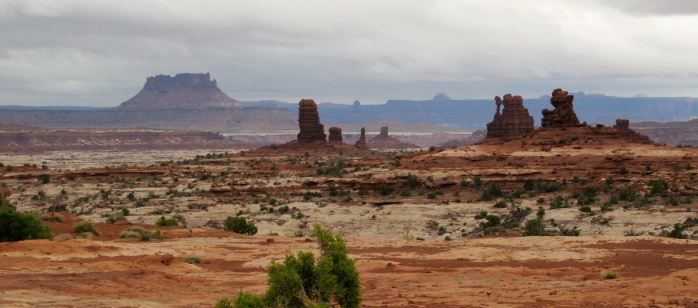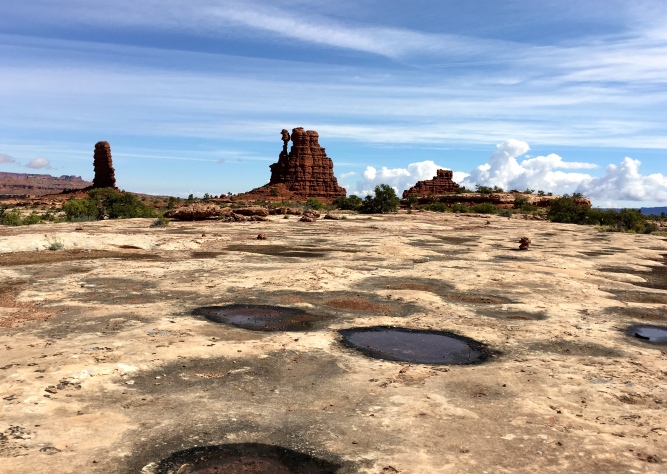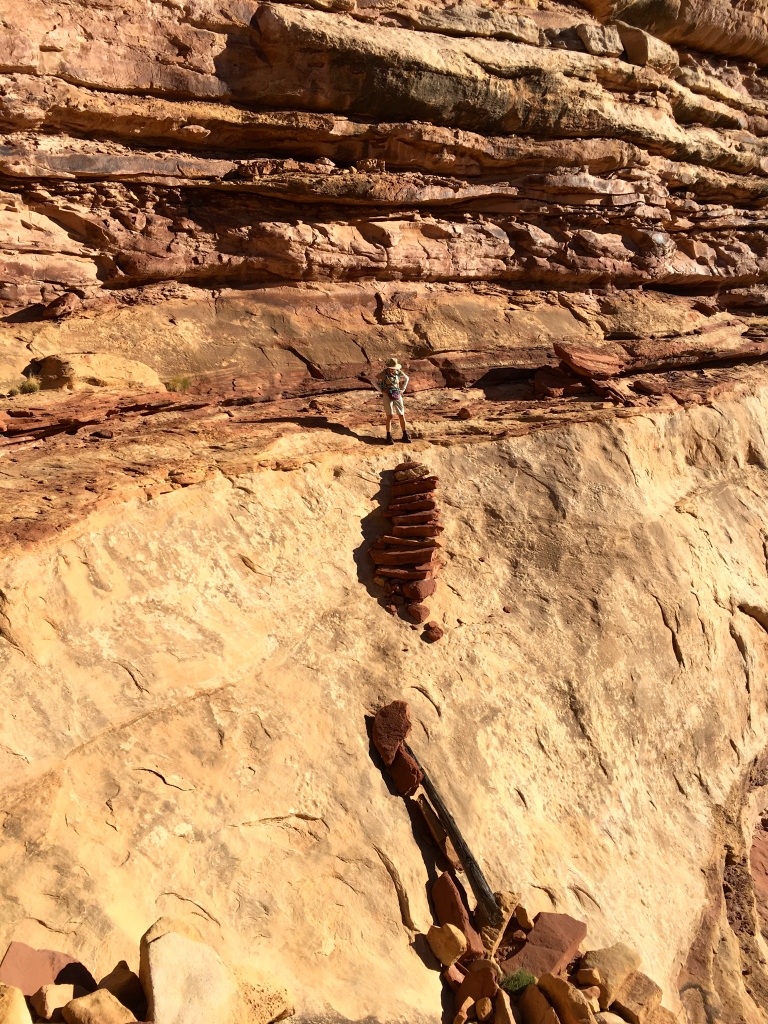
Only the first step or two were tentative.
We stared at the steps before us, Melanie and I did, a bit unsure of our next move. Shot Canyon is steep-walled Cedar Mesa sandstone; there is no other entry. Basque herdsmen in the 1890s constructed a way for their sheep to access water in the canyon bottom, and these (*cough*) stairs are still in use.

Above Shot Canyon on a perfect September day
120 years ago some guy stacked a base layer of rocks on slanty sandstone, and then layered step after step upward. Hikers gingerly (not knowing the lifespan of a sheep stairway) descend the narrow steps, cross the bare area, land on the slab rocks atop the log, and descend further to the second, less-sketchy, stairway below. All this while five hours’ difficult drive from the nearest human being, should anything go wrong.
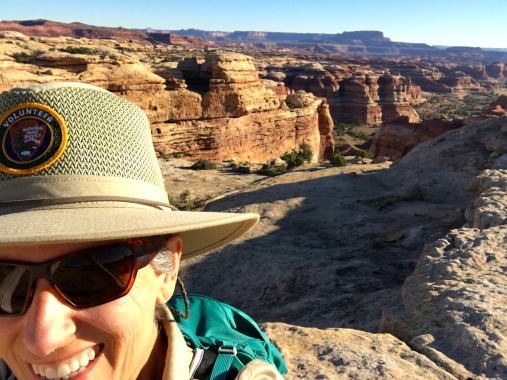
Ranger Kathryn in her beloved Maze District of Canyonlands Nat’l Park
Can you see the happy park ranger* smiling to be out in the wilderness? She is happy because at 0124 that morning, under a nearly-full moon, a rare Spotted Owl hooted her awake. And she is happy because she’s ready to go down some clever steps and explore a place she’s never seen before. It doesn’t get much better than this!
=======
Where was the last dangerous staircase you used? How did you feel? Leave a comment, please!
========
*Disguised as a volunteer this season, as you can see by my hat.


